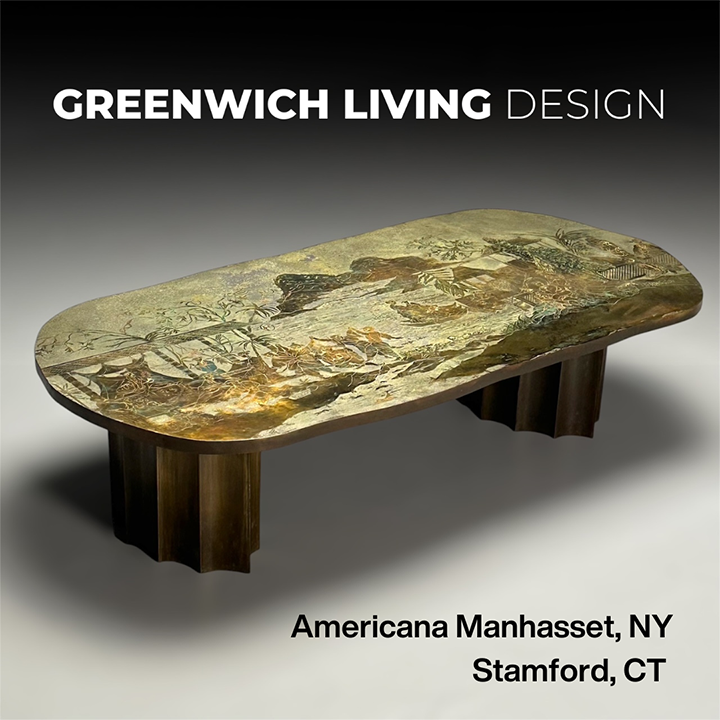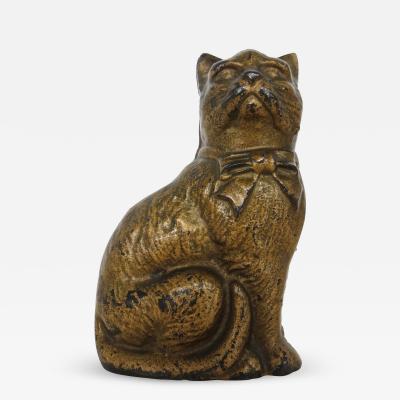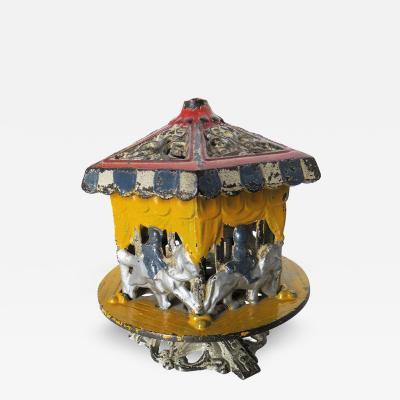- FINE ART
-
FURNITURE + LIGHTING
Shop By Category
Shop By Artist
- NEW + CUSTOM
- DECORATIVE ARTS
-
JEWELRY
Shop By Category
Shop By Artist
- INTERIORS
- MAGAZINE
Period
Medium
Size
- Clear All
Grey Iron Casting Company
American, 1922
Artist Bio: The Grey Iron Company
The Grey Iron Company, established in 1881 in Mount Joy, Pennsylvania, was founded by Henry S. Stauffer and his brother-in-law S. N. Eaby. Initially set up to manufacture Stauffer's patented post support and Sholl’s reversible blind and shutter drop-hinge, the company saw early success before Eaby’s departure led Stauffer to run the operation independently under the name Grey Iron Casting Company.
In February 1891, Stauffer sold the business but remained as manager until at least 1894, when he transitioned to the Columbia Grey Iron Company. The new leadership of the Grey Iron Casting Company included T. B. Himes as President, John W. Eshleman as Secretary and Treasurer, and Reuben J. Myers as Superintendent. At this point, the company employed 60 workers, despite having the capacity for 125.
During the late 19th century, the National Novelty Corporation was formed in 1901 with a significant capitalization aimed at consolidating toy production in the U.S. The Grey Iron Casting Company was included among the 16 companies involved. However, by December 1906, the National Novelty Corporation went into receivership, leading to the creation of the Hardware & Woodenware Manufacturing Company in 1907, which aimed to acquire its assets.
In February 1908, the Kenton Manufacturing Company faced financial difficulties and transferred its patterns and dies to other companies, including the Grey Iron Casting Company, which began producing modified versions of safe banks initially created by the Wing Manufacturing Company.
By early 1912, the Hardware & Woodenware Manufacturing Company failed, prompting an auction of its assets. The Grey Iron Casting Company was eventually sold to the Wrightsville Hardware Company for $35,000, although subsequent disputes over ownership ensued. By August 1913, new letters of incorporation were filed, listing Eshleman and other local figures as officers. Legal complications regarding stock ownership persisted into the 1920s.
The company suspended its toy production in 1941 to contribute to the war effort by manufacturing munitions. In 1968, the Grey Iron Casting Company was acquired by the Donsco Corporation based in Wrightsville, PA. However, the company faced a devastating fire on February 10, 1979, resulting in over $1.5 million in damages and the loss of all original records, with arson later identified as the cause.
The legacy of the Grey Iron Company reflects a dynamic history of innovation, resilience, and adaptation in the face of industry changes and challenges.
